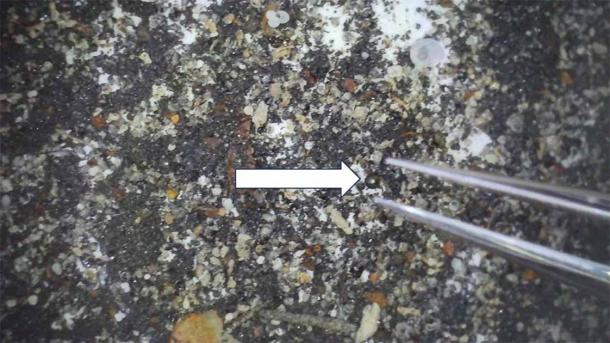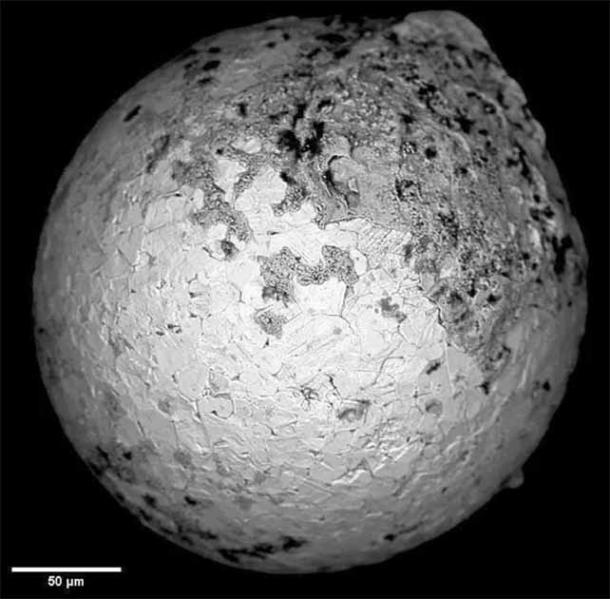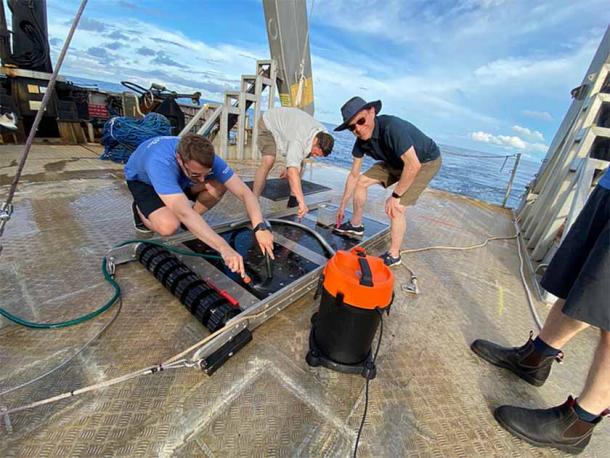
First Metals from Outside Our Solar System Recovered from Pacific Ocean!
In the last week of June, a Harvard physicist made the claim that the world’s first ‘interstellar hook’ developed by him to hunt for alien material, had struck gold (not literally). The alien-hunter physicist, Professor Avi Loeb, has said that early analysis of tiny metal droplets recovered from the Pacific Ocean originated from outside our solar system – a first in history! These remnants originated from a meteor like object that crashed off the coast of Papua New Guinea in 2014.
Alloy Compositions Absent from the Metal Spectrum!
"This is a historic discovery because it represents the first time that humans put their hand on materials from a large object that arrived to Earth from outside the solar system. The success of the expedition illustrates the value of taking risks in science despite all odds as an opportunity for discovering new knowledge,” recorded Loeb in his observations on Medium, where he has been tracking this interstellar journey.
During the expedition, the team unearthed approximately 700 minuscule metallic spheres, with an in-depth analysis conducted on 57 of them. The compositions of these 57 spheres do not exist in the classification within the realm of both natural and human-made alloys, and Loeb confidently asserts that these findings are outside the realm of our solar system’s known alloy compositions.
- Anomalous Metallic Object Discovered Inside a 4.5 Billion-Year-Old Meteorite
- New Study Proves ALL the Building Blocks of Life Found in Meteorites!

Collected material from the magnetic sled at IM1’s site, showing a 0.4-millimeter diameter iron-rich spherule (white arrow) amongst a background of shell hash and other debris. (Avi Loeb/Medium)
“I was thrilled when Stein Jacobsen reported to me about it based on the results in his laboratory. Stein is a highly conservative and professional geochemist with a worldwide reputation. He had no bias or agenda whatsoever and expected to find familiar spherules with solar system composition. But the data showed something new, never reported in the scientific literature. Science is guided by evidence”, said Loeb in an exchange with The Daily Mail.
Examination of the fragments revealed a significant abundance of Beryllium, lanthanum, and uranium (‘BeLau’), accompanied by a notably low concentration of elements that typically bind with iron, such as Rhenium, an exceptionally rare element on Earth. Although these elements are indeed found on our planet, Professor Loeb opined that the elemental compositions do not align with the alloys present on Earth, the Moon, Mars, or any known natural meteorites within our solar system.
The study posits that the distinctive 'BeLaU' abundance pattern observed in IM1's spherules could conceivably have originated from a celestial body with a highly differentiated planetary magma ocean. The document expounds upon the notion that these elemental patterns deviate from those observed in celestial bodies within our solar system, even contrasting with the composition of Earth's upper continental crust.
- Astronomers Studying The Oumuamua ‘Alien Spaceship’ Identify Its Interstellar Origins
- The Tecaxic-Calixtlahuaca Head: Evidence for Ancient Roman Transatlantic Voyages, a Viking Souvenir, or a Hoax?

Image of one of the spherules, taken at Harvard University using the electron microprobe in Professor Stein Jacobsen’s laboratory. (Avi Loeb/Medium)
Professor Loeb's theory extends to the possibility that the combination of BeLaU, characterized by its 'overabundance of heavy elements,' might have been expelled from cataclysmic events like supernovae or neutron star mergers. However, the discerned pattern is closely associated with the 's-process,' hinting at a distinct origin, such as Asymptotic Giant Branch (AGB) stars. These AGB stars represent the ultimate stage in the life cycle of low- and intermediate-mass stars, driven by intense nuclear burning processes.
“For now, we wanted to check whether the materials are from outside the solar system. The success of the expedition illustrates the value of taking risks in science despite all odds as an opportunity for discovering new knowledge,” explained Loeb.
Setting Sail: A Voyage of Unknown Consequence
Under the guidance of Professor Loeb, a team of scientists and researchers enlisted the services of EYOS Expeditions and set sail in June on the vessel named the Silver Star, bound for Papua New Guinea. Their mission unfolded north of the country, spanning two weeks, with financial backing of $1.5 million provided by entrepreneur Charles Hoskinson. Their objective was to recover any remaining fragments of an extraordinary (interstellar) meteorite which they dubbed IM1, that had entered Earth's atmosphere in 2014.
Data pertaining to this meteor had gone unnoticed for five years until Professor Loeb and Amir Siraj, then a Harvard undergraduate, unearthed it in 2019, subsequently publishing their discoveries. However, it wasn't until another three years had passed that the U.S. Space Command, in a letter to NASA dated March 2022, officially confirmed that this object had originated from another solar system.

Pdf. of email of confirmation of IM1 as of interstellar origin. (Avi Loeb/Harvard)
This revelation served as validation for Professor Loeb, who is a co-founder of the Galileo Project, a research initiative based at the Harvard-Smithsonian Center for Astrophysics dedicated to the scientific exploration of alien technology. Seven months later, Loeb and his team found themselves 53 miles (85.2 kms) off the coast of Manus Island, systematically searching over 100 miles (161 kms) of the ocean floor using a sled equipped with magnets, securely tethered to the ship's deck, reports USA Today.

Cleaning and scraping of the sled with magnets that collected the interstellar metal fragments, with team members J.J. Siler (left) and Avi Loeb (right). (Avi Loeb/ Medium)
"The findings demonstrate the success of the first exploratory expedition and pave the way for a second expedition to seek more data," Expedition Coordinator Rob McCallum of EYOS said in a statement. "We love to enable our clients’ projects anywhere on Earth, but this one is out of this world."
There is an ongoing analysis aimed at determining the origin of these objects, being conducted across laboratories at Harvard University, the University of California, Berkeley, the Bruker Corporation, and the University of Technology in Papua New Guinea. Each of these research facilities brings specialized expertise and resources to the comprehensive investigation.
Top image: Images of one of the tiny metal fragments that came from a meter-size object that crashed off the coast of Papua, New Guinea in 2014. Source: Avi Loeb/Medium
By Sahir Pandey
References
Clark, S. 2023. Astrophysicist Avi Loeb: ‘UFOs should be the subject of mainstream inquiry. Science must bring clarity’. Available at: https://www.theguardian.com/world/2023/aug/26/astrophysicist-avi-loeb-ufo-extraterrestrial-life-space-science-interview.
Lagatta, E. 2023. Metallic spheres found on Pacific floor are interstellar in origin, Harvard professor finds. Available at: https://www.usatoday.com/story/news/nation/2023/08/29/metallic-spheres-interstellar-origin-avi-loeb-finds/70699783007/.
Liberatore, S. 2023. First ever 'alien' objects found on Earth? Harvard physicist Avi Loeb says hundreds of tiny fragments he found at the bottom of the Pacific Ocean ARE from outside our solar system. Available at: https://www.dailymail.co.uk/sciencetech/article-12456979/First-alien-object-recovered-Earth-Harvard-Avi-Loeb-says-hundreds-tiny-fragments-bottom-Pacific-Ocean-outside-solar-system.html.
Loeb, Avi, 2023. Diary of an Interstellar Voyage, Report 45. Available at: https://avi-loeb.medium.com/the-im1-spherules-from-the-pacific-ocean-have-extrasolar-composition-f025cb03dec6















